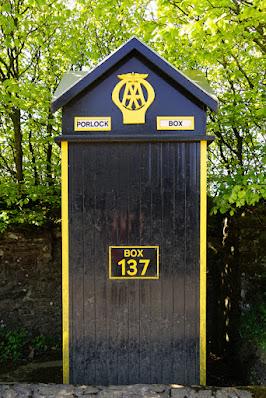The AA box was once a familiar sight to Britain's motorists. When cars were both less numerous and more unreliable, these distinctive black and yellow structures offered help and reassurance to members of the Automobile Association. From their introduction in 1912 until 1919, each box was staffed by a sentry who would assist motorists with directions, first aid, and roadside repairs. Thereafter, the boxes had several functions, acting as shelters for road patrols, numbered landmarks for stranded motorists to pinpoint their location when calling for help from the dedicated phone inside, and stores for helpful items such as lights, fire extinguishers and maps. (Members had a key to access them.)
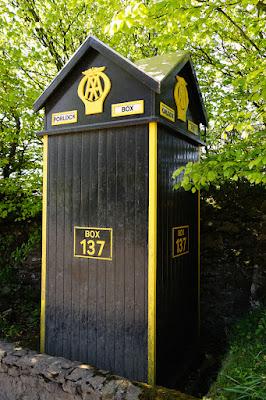
From 1927, the boxes were of a standard design, made of wood painted in black gloss. Their apparent decoration was also functional: plaques with distinctive yellow accents included logos, the box number, and the name of its location. Edges of the walls and door were also picked out in bright yellow strips. Even the roof finial doubled as ventilation for the interior. The examples in this post are the newer, 'Ennam' model introduced after the Second World War: still black and yellow, but without the highly tapered walls of its predecessor, and with internal panels made of melamine.
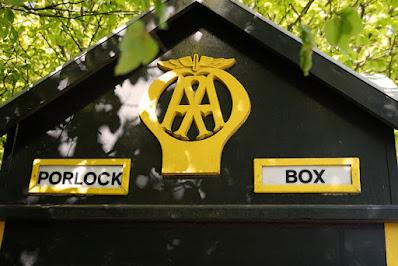
In their mid-century heyday, over 1000 AA boxes were installed in Britain (with close to 800 in operation at their peak). As public telephones became more readily accessible, and patrol officers had well-equipped vans, so the boxes became increasingly redundant and by the 1970s, their numbers began to decline. The AA abandoned boxes in favour of telephones on poles, most familiar along motorways. Today, only a very few boxes remain - fewer than two dozen are known, of which three are in museums. One of the finest and best-known survivors is the one at the top of Porlock Hill, Exmoor, whose notoriously steep road must have brought plenty of customers in overheated vehicles! It is now Grade-II listed and was recently restored so it looks particularly fine.
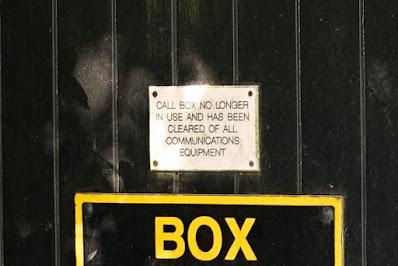
The AA's original activities were perhaps a little questionable. Founded in 1905 as the Motorists' Mutual Association, it dates from a time when cars were not only a rarity but also subject to highly restrictive laws, particularly around speed. Teams of cyclists were employed by the association to alert drivers to speed traps so that they could avoid being caught and penalised by the police! Its services quickly changed and expanded to include motor insurance, road signage, hotel ratings (still much used today), and roadside repairs. Its competitor, the Royal Automobile Club (RAC) is even older, having been founded in 1897 and becoming 'Royal' a decade later. It had its own network of (rather less stylish) boxed, and by the 1960s members of either organisation could use each other's boxes.
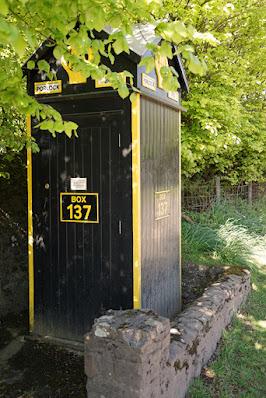
Today, motorists are expected to use their mobile phones to call for help. The demise of these boxes has removed more than telephones, however: as well as shelter and simple equipment, we have lost a reassuring landmark along our roads.
